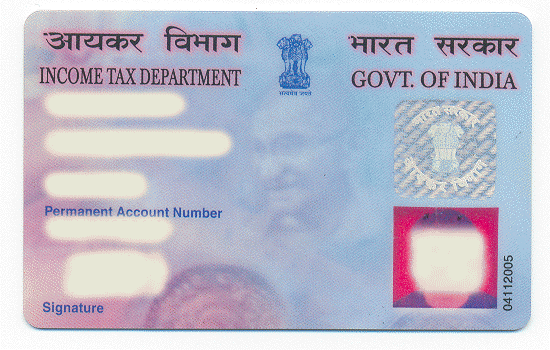ID stands for Identity Document. It refers to a card or piece of paper that provides complete details about the identity of a person or ID card holder. It is used to identify a person. The ID that contains the photograph of the ID cardholder is known as a photo ID.

Identity documents in India
Aadhaar Card: This 12-digit biometric card is issued by means of the UIDAI (Unique Identification Authority of India) and contains critical personal information. It is used for various authorities services and subsidies, in addition to passport packages.
- PAN Card (Permanent Account Number): Issued through the Income Tax Department, the PAN Card is a 10-digit alphanumeric identifier important for taxation functions, financial institution account establishment, and economic transactions.
- Voter’s ID (EPIC – Electors Photo Identity Card): Issued by the Election Commission of India, this card presents the proper to vote and is mandatory for residents above 18 years old at some point of elections.
- Passport: Issued via the Ministry of External Affairs, the passport is an important document for the global journey, confirming a character’s citizenship and nationality.
These documents serve as important evidence of identification and are essential for various felony, economic, and civic activities in India.
The Role of Identity Documents
Identity documents are crucial in our lives, serving as proof of identity, citizenship, and legal status. They establish who we are and grant access to essential services, like government subsidies and financial transactions. They also secure our voting rights, ensure compliance with laws, and enhance security through features like biometrics.
These documents are vital for employment and education, making them the linchpin of an organized society, safeguarding against fraud and enabling us to participate fully in our nation’s framework.
Identity Document Issuance and Verification
The issuance and verification of identity documents are vital processes for maintaining order, security, and accountability in society. Here’s a concise overview:
Issuance:
- Application: Individuals apply for identity documents, meeting specific requirements.
- Document Submission: Necessary documents and information are submitted to the issuing authority.
- Verification: Authorities meticulously review and verify submitted data, often cross-referencing with official records.
- Biometrics: Biometric data like fingerprints may be collected for enhanced accuracy.
- Approval: Upon successful verification, the identity document is issued, containing personal details and a unique identifier.
Verification:
- Presentation: Individuals present their identity documents for various purposes.
- Examination: Verifiers check for authenticity, including security features like holograms and biometrics.
- Cross-Verification: Information may be cross-checked with official databases.
- Validation: Documents are checked for tampering.
- Decision: Based on verification results, decisions are made for transactions or access to services.
- Record Keeping: Records are maintained for auditing and accountability.
International Travel and Identity Documents
International tour and identification files are intently intertwined, as those documents are crucial for travellers crossing international borders. Here’s an overview of how identification files play a crucial position in global travel:
1. Passport: A passport is the number one identification document for a worldwide tour. It serves as universally recognized evidence of a traveller’s identification, nationality, and citizenship. Passports commonly include non-public info, a picture, and a completely unique passport number. Travellers have to gift their passports at immigration checkpoints while coming into or leaving a rustic.
2. Visa: In addition to a passport, travellers often require a visa to enter some other United States of America. A visa is an endorsement or stamp within the passport, granting permission to go into and live inside a particular u. S . A . For a described period and reason. Visa necessities vary from U. S . To the United States of America and depend upon the vacationer’s nationality and the reason for their go-to.
3. Identification During Travel: Travelers are generally required to keep their passports with them always even as they tour across the world. They can be requested to reveal their passport throughout numerous degrees in their adventure, such as at airport protection, customs, immigration checkpoints, and while checking into accommodations.
4. Additional Identification: Some tourists may additionally deliver additional forms of identification, which include driving force’s licenses or country-wide identity cards, as a secondary manner of identity whilst abroad. However, these files are usually not legitimate for international travel on their own and are used at the side of a passport.
Conclusion
In the end, identification documents play a pivotal position in contemporary society, serving as tangible proof of a character’s identity, citizenship, and prison popularity. These documents, such as passports, motive force licenses, and country-wide ID playing cards, are not just symbols of personal identity; they are the gateways to several rights, privileges, and offerings.
Identity documents are important for worldwide travel, monetary transactions, gaining access to government services, and collaborating in democratic procedures like balloting. They additionally make contributions to safety and duty by means of incorporating advanced authentication capabilities and biometrics to discourage fraud and tampering.
FAQs About ID
Common types of identity documents include passports, driver’s licenses, national identity cards, birth certificates, social security cards, and voter identification cards.
Identity documents are crucial for various purposes, including verifying one’s identity, accessing government services, traveling internationally, conducting financial transactions, and participating in civic activities like voting.
Biometrics, such as fingerprints and facial recognition, are increasingly used in identity documents to enhance security and authentication, making it more difficult for identity theft and forgery.
It’s essential to keep your identity documents secure by storing them in a safe place, reporting losses or theft promptly, and not sharing sensitive information with unauthorized individuals.



















